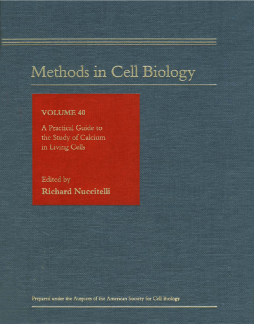
BOOK
A Practical Guide to the Study of Calcium in Living Cells
Leslie Wilson | Paul T. Matsudaira | Richard Nuccitelli
(1994)
Additional Information
Book Details
Abstract
A Practical Guide to the Study of Calcium in Living Cells describes popular techniques along with helpful do's and don't's and computer programs. The volume enables investigators to evaluate confocal images, use the latest dyes, and design Calcium buffers appropriate to their research needs. This book is designed for laboratory use by graduate students, technicians, and researchers in many disciplines, ranging from molecular to cellular levels of investigation.
- Describes techniques for detection of [Ca2+]I: Ca2+ - sensitive microelectrodes
- Fluorescent dyes
- Luminescent proteins
- Includes techniques for perturbing intracellular Ca2+
- Covers detailed methodology plus problems and pitfalls of each technique
- Contains a practical guide to preparing Ca2+ buffers with an easy-to-use computer program
- Color plates illustrate techniques such as
- Confocal ratio-imaging
- Use of aequorin
"This multi-authored book... provides theoretical and applied aspects of different established techniques for the measurement of [Ca2+]i at submicromolar concentration. Each chapter is organized, keeping in view the needs of a person working in the laboratory, by giving the detailed methodology required for the implementation of that particular technique, and all the chapters are well referenced... The book provides a pragmatic approach for the estimation of cytosolic [Ca2+]i and also provides a means for studying the spatial and temporal resolution of [Ca2+]i. The book achieves the stated goal in the preface, 'this material will be very useful to the investigator who wants to apply any of these methods to his or her research.' It is a very well-written monograph and includes useful illustrations and helpful, practical points." --RAMESH BHALLA, University of Iowa, Iowa City
"The book achieves the stated goal in the preface, this material will be very useful to the investigator who wants to apply any of these methods to his or her research. It is a very well-written monograph and includes useful illustrations and helpful, practical points." --MOLECULAR & CELLULAR NEUROSCIENCES
